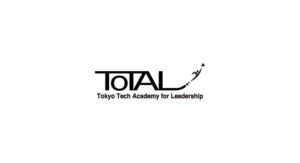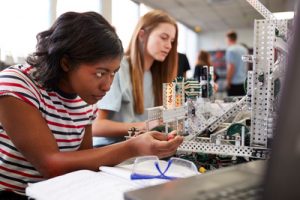Day 2 of “d.school comes to Tokyo Tech” workshop, a part of course; “Fundamental Group Work for Leadership【F】” and a ToTAL/OPEN Program,
reported by Kabir Shahriar, 2019 ToTAL student. (*英語にて報告/reported in English)
I. Day 2 of the workshop
After the activity filled first day of the workshop, we were really excited to see what was in store for us on the second day. Similar to Saturday, there were also two sessions on Sunday – morning and afternoon session. After all the participants arrived at the venue in the Ookayama campus, the morning session began.
1. Morning session
Brainstorming Project: The very first activity of the day was to get everyone warmed up and on the same wavelength – both physically and mentally. So, as soon as the clock struck 9AM, all of the 36 students and the 2 instructors gathered in the middle of the room and started a quick but fun workout session! The atmosphere was full of action as we punched and kicked the air to get the energy level of the whole team as high as possible. When we were warmed up and ready, it was time to begin the first team activity – brainstorm about the 2020 Olympics. First, we were divided into teams of 4 and then we were given some standard instructions about “Brainstorming” – as this particular activity is fundamentally different from “Team discussion”. We were asked to produce as many ideas as possible on a given topic, try to be as open-minded as possible, defer judgement and encourage any idea no matter how wild it seemed. Keeping these points in mind, we started brainstorming on 3 specific topics:
- All the positive impacts that the 2020 Olympics may bring for Japan
- All the negative impacts that the 2020 Olympics may bring for Japan
- All the opportunities the Olympics may bring for university students
The allocated time for each topic was very limited and so we had to challenge ourselves as a team to come up with as many ideas as we can. When all the teams were done, we moved around and discussed the different ideas that each team had generated. Although some of the main ideas were similar, each team had some unique perspectives to offer for each of the topics. The goal of this brainstorming session was to learn to be collaborative and generative. The instructors heavily emphasized that the design process requires both “Generative” state of mind and also the “Selective” state of mind. In the generative state of mind, we aim to be open-minded, and try to generate as many ideas as possible while encouraging others to do the same. In the selective state of mind, we have to be logical and rational, be critical about our ideas and select certain ideas that are feasible and reasonable. As a successful designer, it is important to understand the time and place for each state.
Morning workout and brainstorming about the impacts of the 2020 Olympics in Japan
Observation Fieldwork: After the brainstorming activity, we sat down again as one group and received the briefing for the next task – an outdoor activity. In this activity, the participants had to work as a pair and subjectively observe a situation and then interpret the situation by using logical and educated guesses. So, we formed teams and went out to different locations in Tokyo and then observed and noted the sights and scenes around us for 20 minutes. During the next 15 minutes, we tried to interpret the situation making educated guesses based upon our observations – we categorically noted the interactions between person and person and also between person and environment. When we took all of this information into account, we could interpret what is happening around us much better compared to making wild guesses and jumping into conclusions about certain situations.
When we were happy with our interpretations, we moved on to the next task – imagining ourselves at the same location, but this time there had been a huge earthquake at that place. We had to use our imaginative power to visualize what would happen at that exact spot with the same people and the same environment. We used our notes and previous interpretations as a guide and tried our best to create a logical and believable description of the place. Then, it was time once again to use our imagination to write a description of the place during the 2020 Olympics. This time, we used our previous notes and the ideas from our Brainstorming Project to create a representation of the place during the Olympics. When the time was up, we returned to the venue and compared our notes with other teams.
2. Afternoon session
Why-How Ladder: The first activity of the afternoon was to understand how to define a problem correctly so that we created different framings of a problem; considering different problem framings opens up different solutions as well. The instructors decided to do this by using the “Why-How Ladder” technique. They showed us a simple photo and told us to address the problem the person in the photo maybe facing. As we tried to understand the feeling of the person and define the problem statement, we realized that the same problem can be defined in a lot of different ways and thus can be solved in many different methods. With this understanding in mind, we used the “Why-How Ladder” on an advertisement by the Kobe Newspaper – we used “why” to define a more abstract problem and used “how” to define a more concrete problem. We realized that if a problem was too abstract, then it was very difficult to propose a feasible solution. On the other hand, if the defined problem is too concrete or too specific, then the proposed solution only served one purpose and it had barely any impact on the society. So, finding a proper balance on the “Why-How Ladder” is critical for defining a problem and finding a solution.
Learning and exercising the concept of the “Why-How Ladder”
Final Activity: The final project of the 2-day workshop was again a group task, this time in a group of 6 members. In this concluding project, we used our design thinking thought process to collect data from the other participants and prepare a very concise 2-minute presentation. Each team was given a different topic to summarize, for example, “The most memorable moments of the workshop” or “The recommendations to the institution on how to continue the design thinking activities”. For this project, the time was again very limited and so we had to come up with a strategy of data collection, summarization and presentation as a team. We started with a rapid brainstorming session about data collection, then moved on to interpreting and summarizing the data and prepared our presentation. Then finally, each team presented about their topic followed by a short open question-answer and discussion session.
At the very end of the day, the instructors, David and Thomas, thanked all the students for their active participation in all the activities and handed over a token of appreciation to Professor Keisuke Yamada and Ms. Keiko Tsuchiya. And with that, this year’s “d.school comes to Tokyo Tech” drew to a close.

All the participants of this year’s “d.school comes to Tokyo Tech”
II. My Comments
This was the first time I attended a workshop on design thinking. It was very refreshing for me to learn to think and act creatively through activity, practice and teamwork. During the 2-day workshop, I had to dig deep into my own skills and abilities for some activities and also had to be collaborative and open-minded in other projects. Thomas and David from d.school of Stanford University were excellent instructors who always encouraged us speak our minds during the workshop and they helped us integrate the design thinking process into our own work process. This workshop was so much more than a simple lecture, it was an opportunity to understand the core concepts of design thinking and use them for the benefit of our future projects. I am very happy that I could attend this workshop and I am confident that the future participants of “d.school comes to Tokyo Tech” will find it very useful as well.
Reported by Kabir Shahriar, Electrical and Electronic Engineering, M2, 2019 ToTAL student




